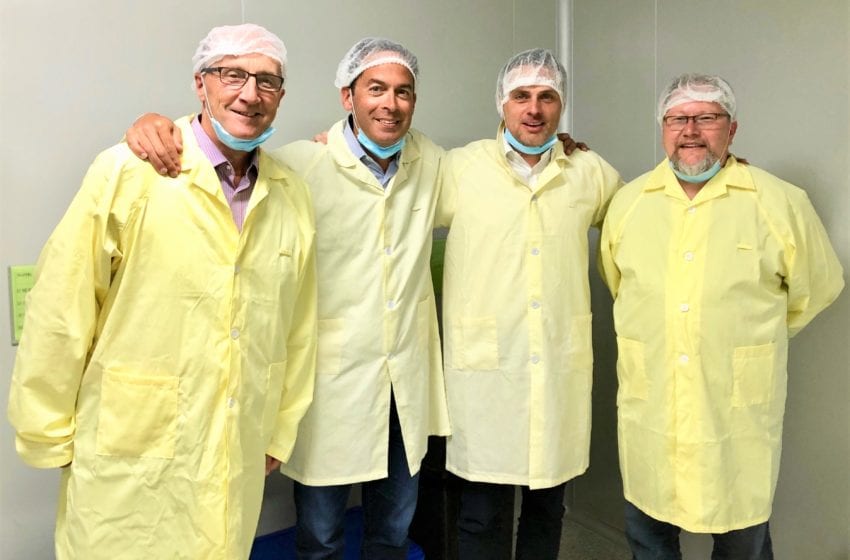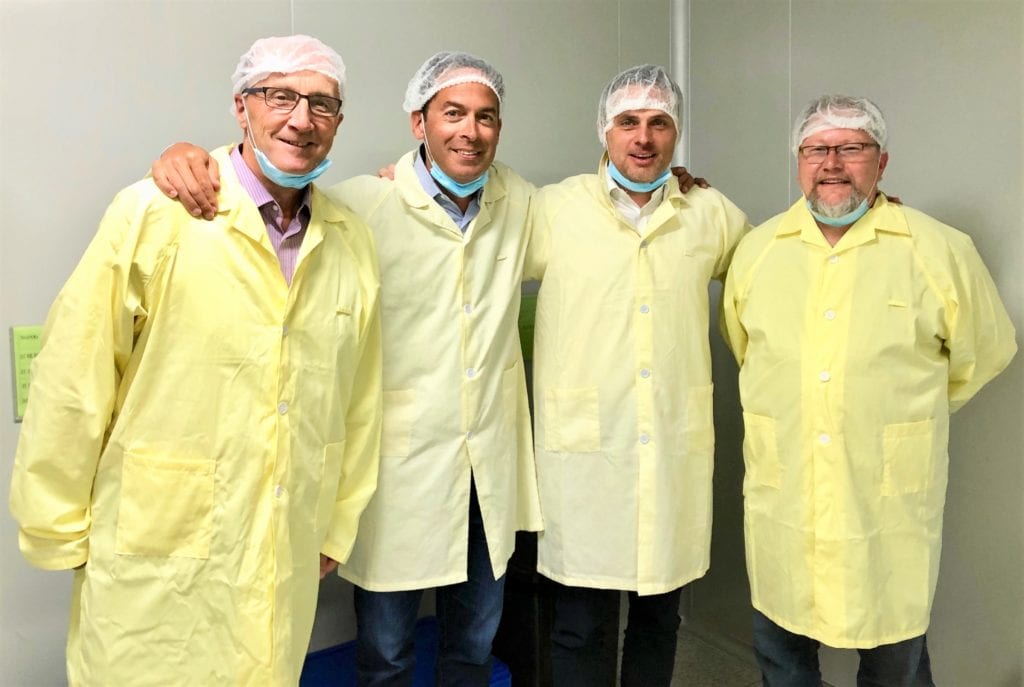
It seems the vapor industry has a future after all. Several large tobacco companies, such as Vuse, Blu, Logic and Juul, have already filed premarket tobacco product applications (PMTAs) for their vapor products with the U.S. Food and Drug Administration (FDA).
While several smaller companies have said they would file PMTAs, E-Alternative Solutions (EAS) is the only vapor manufacturer to announce that it has received both acceptance and filing letters from the FDA for its submitted vapor products.
EAS’ Leap and Leap Go brands will now move on to the substantive review stage of the PMTA process. During this phase, the FDA will decide whether the EAS products are “appropriate for the protection of public health.”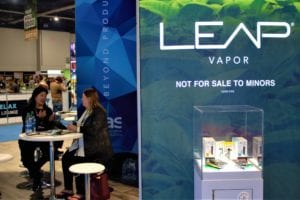
“This milestone represents an important step forward for EAS as we support our mission of producing high-quality vapor products that serve as an alternative to combustible cigarettes with our Leap and Leap Go vapor products,” said Jacopo D’Alessandris, president and CEO of EAS. “FDA acceptance and filing letters are a testament to the strength and thoroughness of our applications, which we believe will meet [the] FDA’s requirements.”
Leap Vapor is a closed pod system designed for adult smokers. Leap Go is a line of disposable e-cigarettes. The Leap and Leap Go products can now stay on the market past the FDA’s PMTA deadline of Sept. 9. The products will be allowed to remain on the market for one year or until the FDA decides whether the products are a benefit to public health compared to combustible cigarettes.
When asked why EAS publicly announced its accep-tance and filing letters unlike some other companies, Chris Howard, vice president, general counsel and chief compliance officer at EAS, said that many vapor wholesalers and retailers remain uninformed about the potential status for many of the vapor products they are selling. EAS wants to be “open and honest” about the process.
“We’ve taken a different approach by providing informa-tion regarding the PMTA process and what it’s like to work with [the] FDA. This gives retailers an idea of what to look for, especially after Sept. 9,” says Howard. “A lot of retailers want to do the right thing. So, after Sept. 9, they don’t want to be doing something illegal. They definitely don’t want to be confused and unsure. We’re providing retailers with a tool to be certain that they are selling legally compliant products after the deadline.”
Howard said that, unfortunately, he does not see a scenario where the FDA will allow a sell-through period for products already on store shelves. The FDA is most likely going to demand that all products that have not submitted a PMTA be removed. However, the FDA may face challenges in policing the more than 152,000 convenience stores operating in the United States, according to the 2020 NACS/Nielsen Convenience Industry Store Count.
“We know [the FDA is] not staffed adequately to do that, and that’s unreasonable. So, in large part, [the] FDA relies on the people who want to be the good actors, to adhere to the regulations,” said Howard. “I think that most will—75 percent if I had to guess. A lot of them will immediately try to be compliant.”
Many retailers wonder if they will be responsible for the products that can no longer be sold or if distributors will buy back the products. While many distributors will not buy product back, Howard says that EAS has always offered its products with a 100 percent guarantee for the retailers.
“At EAS, we make it clear that our products are 100 percent guaranteed, and we do take product back. We’ve taken back all of the flavored pods that we had on the market and provided people with full refunds or credit in the form of other product,” he explains. “I personally believe that is the right thing to do, especially in an industry where the channel was burned multiple times by various vapor companies, and retailers got stuck with inventory that they couldn’t move. I think that some companies are aligned with my view on that, and they will take it back—but I wouldn’t say it’s the majority.”
RAPID RESPONSE
The FDA does not necessarily have a reputation for moving quickly. However, EAS received its acceptance and filing let-ters just over a week after submitting the application. Howard says that there isn’t necessarily a rational reason for why it was so fast. However, the FDA is committed to its timelines and is trying to move in an expedited manner.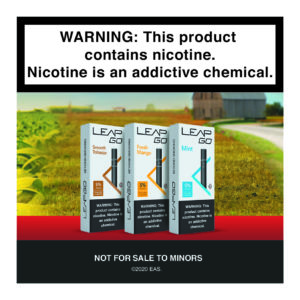
“When you have something that’s organized and it comes in and makes it easy for them, then yes, you’re likely going to get the benefit of a quicker review. Now, I don’t know if that translates into a quicker substance review, or scientific review,” Howard said. “I believe one of [the FDA’s] goals is to clean up this space and get their arms around the problem. One of the ways to do that is to make sure you get those acceptance and filing letters out quickly. And you reject the ones just as quickly that aren’t adequate to meet the standard.”
Howard said that the EAS PMTAs for the Leap and Leap Go products together comprised 109,000 pages. EAS essentially filed two “buckets” of PMTA data with one being the Leap Go (which contained three SKUs) and the other the Leap (which contained 26 SKUs) for a total of 29 SKUs. The data contained more than 25 individual studies. The applications also contained several digital links to data.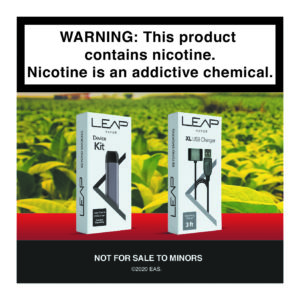
“The Leap application had about 45,000 links, and the Leap Go had about 46,000. We covered every discipline. We did behavioral testing. We did an assessment of popula-tion risk. We did clinical studies. You might have heard of PK [pharmacokinetic] studies to see how the body reacts to the products. We did those to show that the products have a lower abuse liability potential relative to cigarettes,” says Howard. “We did all of the required HPHC work to con-firm that our exposures are a lot lower than the combustible cigarette. We did toxicity testing. We did a comprehensive analysis of every ingredient that’s in the products. We did chemistry testing. We evaluated the products for stability and shelf life, and that’s still ongoing for the next two years. We did an environmental assessment.”
Flavors in vapor products have been a controversial subject recently. When asked if EAS had submitted any flavors other than tobacco flavors for its PMTAs, Howard said the company approached the subject carefully and with much consideration of how flavors have been shown to help smok-ers make the decision to seek an alternative to cigarettes. He also acknowledged the open question as to whether flavors may contribute to youth experimentation but noted that companies like EAS, which prioritize compliance and limit-ing access and exposure to adults, are positioned to market flavored products responsibly moving forward.
“For the Leap pods, we currently only sell tobacco and menthol, which were submitted. We also submitted all the flavors we had to remove from the market back in February. There were a handful,” said Howard. “For the Leap Go, which are disposables and flavors are permitted, we submit-ted a mango flavor as well as tobacco and mint. You have to make decisions when you’re spending millions of dollars trying to create some efficiencies, and this was one of the ways we tried to be prudent. It’s not to say that we wouldn’t file more Leap Go flavors later, but if you look at our rela-tive business model, the Leap is a more dominant product, so we had a heavy focus on its PMTA submission.”

Howard said he could not share the total cost for the PMTA process; however, it was in the tens of millions of dollars for all 29 SKUs combined.
WAITING FOR ANSWERS
Howard says the letters are straightforward. They state that EAS’ application has been accepted and filed, respectively, and the applications are ready to move on to the next stage. This is the stage where the FDA may want a tour of the com-pany’s manufacturing facilities. “I could see this happening,” explains Howard.
The process is now completely in the hands of the FDA, according to Howard. There could also be several different types of situations that present themselves before the FDA issues either a marketing authorization or denies the applica-tion. Howard said the acceptance and filing letters do provide some clarification, but it is still a “wait and see” process.
“I think the next step should be that, if they’re going to do it, they’re going to ask for samples. I believe that is what really starts the 12-month timeline. We haven’t been asked for samples yet. We’ve immediately engaged to make sure we have the samples ready, even the flavored pods, which are not currently on the market,” said Howard. “Now, they’re going to have their hands full come Sept. 9; I’m sure they’re going to get a lot of applications, and that might slow things down.”

The FDA may also need additional information, accord-ing to Howard. The agency may request additional details regarding studies EAS has already provided, for example. It’s also possible that EAS may have to complete additional stud-ies to be able to answer a specific question.
“What I like to think is going to happen in that stage is a give-and-take and sort of a collaboration about what’s reason-able because, at the end of the day, these products are clearly appropriate for the protection of public health as compared to cigarettes,” Howard said. “Then you have this engagement, and that’s consistent with what [the] FDA has said, and then you’re on your way. Additionally, if you do get a request for additional information, that technically stops the clock, so that could extend your 12-month window. After the FDA receives any additional information it may require, the next phase is receiving the marketing authorization.”
If EAS receives a PMTA, the next step for the company to consider is whether it wants to file for a modified-risk tobacco product (MRTP) application. The only products to have ever received an MRTP are snus products and Philip Morris’ IQOS heat-not-burn device. Howard says that EAS may consider going through the process, but he questions the value of an MRTP.
“We now know it isn’t just some black box that nobody gets. I mean, it’s clearly possible. But we have to wait and see how this vapor category shakes out and whether or not an MRTP claim—whether it’s reduced harm or exposure—does that really add value in the eyes of the consumer?” Howard asks. “I don’t know the answer; so it’s a wait-and-see kind of decision.”
To grant a PMTA, the FDA will have to determine a product is “appropriate for the protection of public health.” It can be interpreted that a tobacco product receiving a PMTA is less risky than a combustible cigarette. However, a company can make that claim only after receiving an MRTP. Even if granted, MRTP claims will still be limited. IQOS, for example, received an MRTP but can only make reduced expo-sure claims. The company cannot make a reduced-risk claim.
“The MRTP is also super expensive. That’s many more millions of dollars on top of what we’ve already spent for the PMTA. We’re looking into the opportunity, but we haven’t decided,” says Howard. As far as advice for companies still preparing their PMTAs, Howard says to remain diligent.
The Covid-19 pandemic has only made collecting the data more complicated. This may lead many companies to be nervous about submitting an incomplete application. Howard says he believes that companies must be open and honest with the regulatory agency.
“If you’re in a position where you can’t do it all, you focus on the statutory requirements and making sure that those are robust and complete. And then areas where you do have gaps, you very clearly explain why you have a gap and what you’re going to do to fix it and when you’re going to be done. Don’t try to do a shortcut version,” says Howard. “I think [the] FDA will be understanding and receptive and ultimately work with you to make sure that all the data is complete. I mean, they don’t want to kick you out for not having finished your human factors testing. However, if you submit without an environmental assessment, they’re going to kick it out.”
After the Sept. 9 deadline, Howard says he expects to see the industry become more streamlined. He says that there’s a strong possibility that numerous companies will go out of business. However, there will still be a sufficient amount of options at retail.
“I think that there’ll probably be multiple variations of e-liquid, so it won’t be as many selections as there are today, but there will be open system options. I think because the products contribute so much to harm reduction that it’s not in [the] FDA’s best interest, or anyone’s best interest, for the cat-egory to be gone,” he says. “So anytime I hear someone say, ‘Oh, the vapor category is going to be gone,’ I completely disagree.” V

